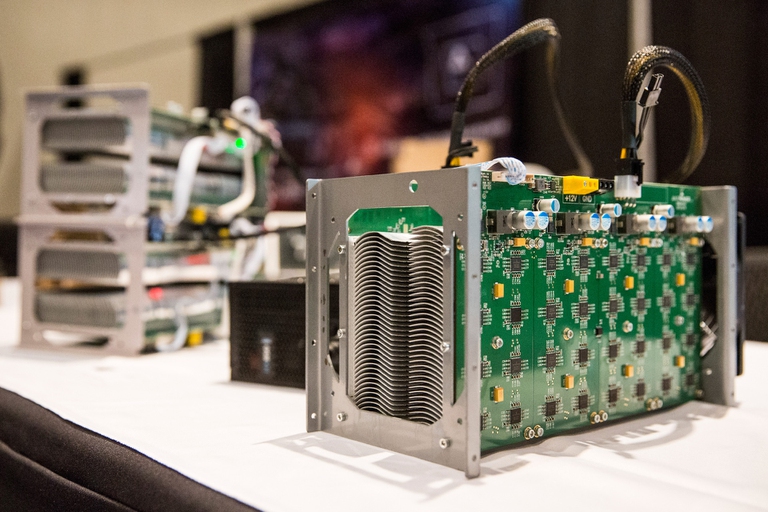https://www.lifegate.it/criptovalute-energia
- |
- In 2021, the annual electricity demand required by Bitcoin production represented 0.6 percent of global production
- The environmental impact of cryptocurrency production has become an “issue of national concern” for Sweden
- The European Union would like to ban the most energy-intensive activities related to the creation of cryptocurrencies
The production of digital coins, commonly called cryptocurrencies, requires too much electricity.For this reason, the European Union wants to intervene regulate mining activities, that is, of "extraction" (creation) of this type of currency. The announcement was made in an interview given to Financial Times, was the vice-president of the European Securities and Markets Authority (Esma), Erik Thedéen.
The latter has called for a change of the activities through which digital currencies are mined.A problem that is becoming increasingly important, so much so that it has become one “issue of national importance” in different parts of the world, for example in Sweden, the country from which Thedéen comes.
How cryptocurrency mining works
There technology that underlies cryptocurrencies it is known as blockchain. The literal tradition is “block chain”:it is the ledger (register) on which all transactions carried out with a digital currency are recorded.This register is shared among all those who contribute to generating cryptocurrencies (the so-called miner) through digital extraction.Miners must respect a protocol of rules.At the basis of the protocol in question is a "consensus algorithm":the first to have been created and used, especially by Bitcoin, was the so-called proof of work.
It is a system that is based on solving mathematical problems very complex on the part of the mining network.In practice, very powerful computers try to solve the problem in order to modify or add a block to the blockchain and receive a reward (in cryptocurrency, of course) for the work done.So, the greater the computing power, the greater the chance of solving the problem first and thus earning the reward.
Over the years, miners have tried to increasingly increase computing power to win more and more cryptocurrencies, with the consequence that the difficulty of the proposed problems has increased exponentially.As well as the computational power required.The result was birth of mining farms (or mining pools):authentic "factories" dedicated to cryptocurrency mining made up of thousands of networked computers.Which he did increase the requirement enormously energy of these operations.
Cryptocurrencies consumed 0.6 percent of the world's energy in 2021
The annual consumption of Bitcoin alone may have been 129 terawatt hours in 2021, according to estimates from Cambridge bitcoin electricity consumption index (Cbeci).Let's talk about 0.6 percent of global electricity production, equal to the absorption of a nation like Norway.For comparison, in 2019 a digital giant like Google had consumed "only" 12.2 terawatt hours.
“Bitcoin mining is now a national issue for Sweden due to the amount of renewable energy dedicated to its mining,” Thedéen said."Would be absurd if wind energy generated on the long Swedish coast was used to generate cryptocurrency,” he added.

Mining, bitcoins are extracted from renewable energy in Trentino
For these reasons, bitcoin mining is being considered an uneco-friendly operation.Also because the second largest extraction center in the world (after China) is Kazakhstan, which bases the production of electricity largely on coal.That is, the fossil source that is absolutely most harmful to the climate.
However, there are also examples of “bitcoin factories” powered by renewable energy.In Trentino Alto Adige, for example, more and more cryptocurrency mining plants are being created that bring old hydroelectric power plants back to life.TO Village of Anaunia, a municipality of 2,500 inhabitants in the Val di Non, a 1925 hydroelectric power plant will be used to provide clean energy to a new bitcoin mining plant.
The priority is to change the "proof of work"
Regardless of how it is produced, whether with fossil fuels or renewable energy, the production of cryptocurrencies represents a supply problem:it makes sense use so much energy for this purpose?The proposal of the vice president of ESMA is to move from a proof of work mechanism to a more sustainable system, known as proof of stake, already tested by other alternative cryptocurrencies to Bitcoin, such as Ethereum, Nxt, Peercoin.In this case, the process through which computers compete with each other to solve complex mathematical problems, i.e. mining, is replaced by a system in which so-called validators they guarantee the validity of operations carried out on the blockchain by pledging a portion of their cryptocurrencies (precisely the "stakes").
In short, anyone who wants to apply to become a validator must deposit a fee of their cryptocurrencies within the network, pledging it as a sort of guarantee or security deposit.Once a node is selected as validator (the choice occurs randomly) of the next block, it will have to check whether the transactions contained in it are valid, sign the block and add it to the blockchain.
Since proof of stake does not require extra energy to prove trustworthiness, it is much more energy efficient.Unlike proof of work, where supercomputers are needed, proof of stake can be run from a single laptop.The nodes of the network, i validators, they are virtual spaces, not physical equipment, which could reduce by 99.9 percent the impact, as reported by Ethereum.However, several experts criticize proof of stake, considering it a less secure method.The fact that it costs almost nothing to become a validator can also attract impostors and cyber-criminals.For this reason, several cryptocurrencies are working on more sophisticated algorithms to assign the role of validators, demonstrating that proof of stake is becoming a matter of interest for several developers.A good outlook for the future of cryptocurrencies and their own impact on the environment.
